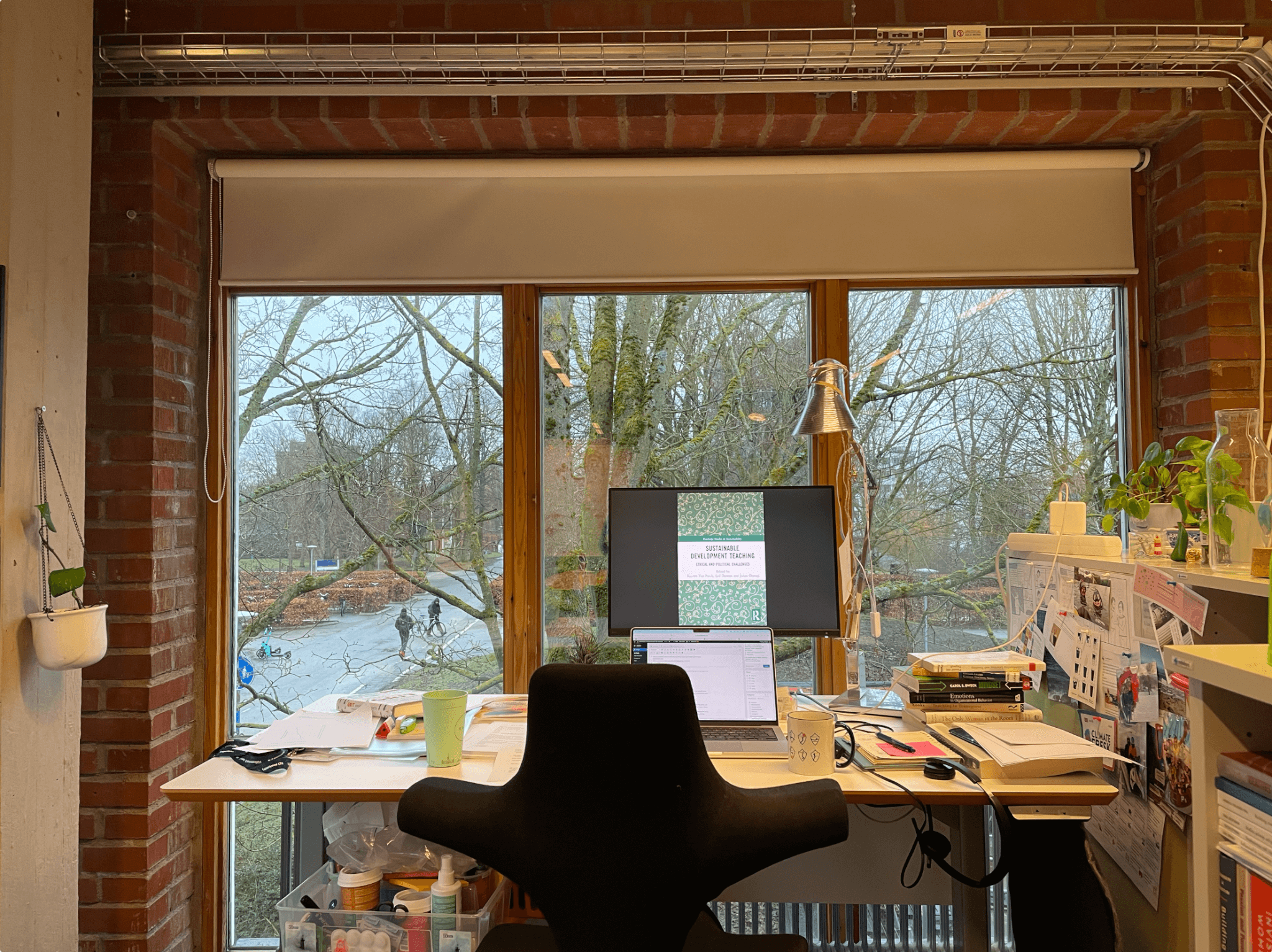
In a nutshell: “Sustainable Development Teaching – Ethical and Political Challenges”, edited by Van Poeck, Östman, Öhman (2019)
I really really really recommend that you read this book, but if you are short on time, check out my summary posts (part I, IIA, IIB, IIIA, IIIB) or the blogpost below for a super boiled-down summary of my takeaways from the whole book. I really enjoyed reading this book, especially because of its focus on “ethical and political challenges”, which I felt completely unprepared to address before, and now feel I have a much better idea of how to tackle; and also understanding what the authors mean by it makes it all a lot less daunting. So here are the main points for me:
It is not productive to spend time on finding a watertight definition of what is meant by “sustainability”, but it is important to point out that sustainability is not just about fixing climate change or similarly narrow issues, but that there are always ecological, economical, and societal questions to consider. This also means that there cannot be a simple technical solution, or not even a very sophisticated one, but that solutions must come out of conversations that involve everybody(ish). There will not be one right solution, or one obvious part to take, but still we need to take action in the right direction and be prepared to re-negotiate constantly.
This is not necessarily something we are currently preparing our student for, though. In teaching, there are the conflicting goals of qualification (which is probably the most commonly expressed one at least in my work environment), socialisation, and person-formation, which relate to fact-based, normative, and pluralistic teaching traditions. Even in fields with very much fact-based traditions, like STEM, we need to include pluralistic approaches and support person-formations, so students actively engage with the questions of who they want to become, what their values are, how those translate into actions, how this relates to other peoples’ values and actions, how to come to joint solutions with people from other traditions and backgrounds, or with different values. And the teacher has the choice to focus on facts, norms, or pluralistic approaches:
- A fact-based teacher might frame a session on “the heat-trapping nature of carbon dioxide”. This would encourage students to deepen their knowledge by for example read books, and a result might be informed citizens
- A normative teacher might focus on “how we can reduce our effect on the climate”, thus influencing students’ attitudes and behaviour, educating moral citizens
- A pluralistic teacher could invite “different standpoints in the debate on climate change”, thus inviting students to reflect and develop own actions and views, leading to political citizens
And of course, the same teacher could (and should!) choose two, or all three of those approaches at different times and for different purposes!
In pluralistic approaches, students need to learn to recognise spontaneous moral reactions where they judge something as right or wrong almost out of a reflex, articulate which underlying norms are at play or being breached, and then reflect on ethical questions more generally. While I still wouldn’t know how to do the last point as a main teaching activity, I found the chapter on “ethical teacher moves” quite helpful, because those boil down to not just letting students claim whatever they want to claim, but asking them to explain their position, bring arguments, and then asking students to think about the validity of those arguments. The teacher can also bring in a statement or controversy and ask students to take a stand in agreement or disagreement with it, or prioritise conflicting values in a given conflict. All of that really only sounds like leading a good, in-depth discussion, right? And it turns out that it is actually the same for political teacher moves. And discussing sustainability topics can lead to strong emotions, and we should be prepared to handle them when they arise, or to even create them to support engagement with content. We can simplify a discussion by either polarising or pointing out communalities, or we can keep emotions alive by confirming them with more examples, or we can redirect emotions and point out that emotions aren’t static but have, and will continue to, change over time.
As to how to teach about sustainability, there are different types of disturbances that can lead to a learning situation and that we can create on purpose:
- An intellectual disruption, i.e. when we realise that our current understanding is not sufficient to solve a problem and we need to reflect and start and inquiry into the problem
- A change in the physical surroundings, which leads to a feeling that we become aware of and pay attention to
- A poignant experience, i.e. an unexpected, strong emotion
The intellectual disruption is probably the most commonly used disruption in the environment I am teaching in, but the changes in physical surroundings are also sometimes utilised in e.g. field teaching. Eliciting emotions is maybe not used as much, or at least not on purpose, but maybe that is the next thing to try!
Featured image: My desk at the time when I planned to start writing this summary… It has been in the making for a while, but I think that’s mainly because I needed enough distance to what I had read to be able to compile it and boil it down enough. And now it feels like most of this has become a part of how I talk about teaching for sustainability!
Van Poeck, K., Östman, L., & Öhman, J. (Eds.). (2019). Sustainable Development Teaching: Ethical and Political Challenges (1st ed.). Routledge. https://doi.org/10.4324/9781351124348